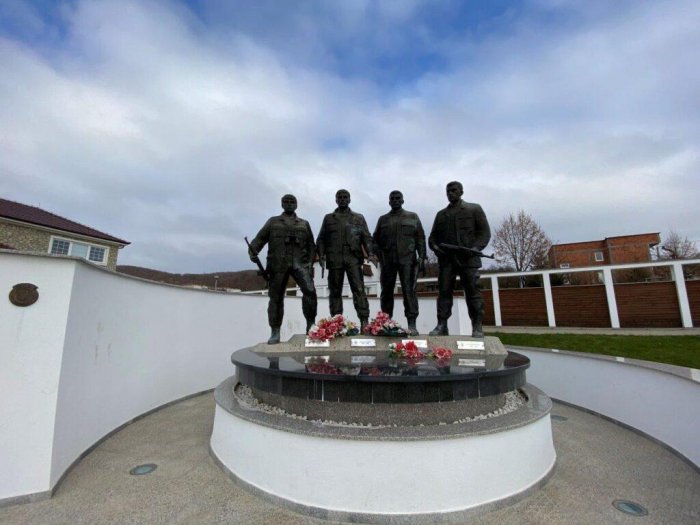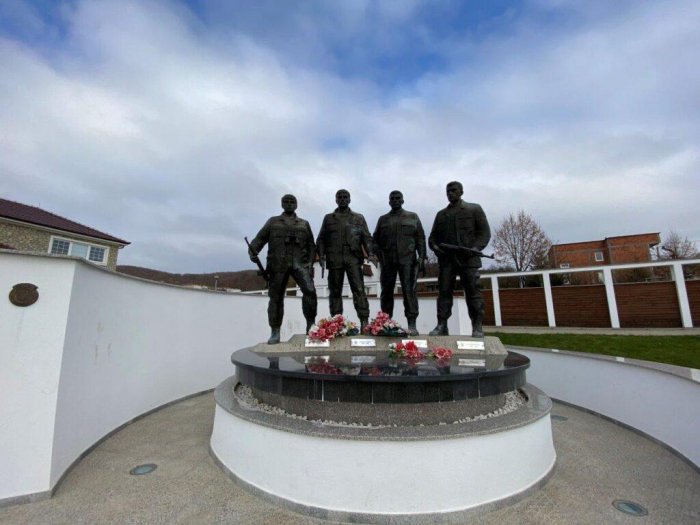Which events deserve to be commemorated? Who gets to have a statue and why?
by Blerta Hoçia

For the time being, in Kosovo, some of these questions receive spontaneous and casual answers. There is no museum of memory or any special central level regulatory law on memorialisation to determine the standards and guidelines about memorials. The only institution responsible for maintaining and financing the complexes and memorials is the Agency for the Management of Monuments and Memorial Complexes, AMMKM. According to the Law No. 04/L-146, it operates as an independent entity. Although it has a list containing almost all memorials built after the war in Kosovo, the list is not comprehensive, and has shortcomings in how it conveys information. Further, the majority of these memorials are dedicated to war martyrs.
The draft-strategy on transitional justice was published in May this year. It is a valuable initiative to open a discourse about important topics in this area. It is also a summary of long-term plans of the Government in this respect. A key point of this draft-strategy is the decision to establish the Museum of the War. The name of the museum implies that the narrative and the emphasis of interpretation shall specifically be on the war. Nonetheless, beyond names (and I hope there will be space to debate on this at the right time), it is foreseen that the establishment, idea and operationalization of this museum within 2025 will stem from another institute – the Institute for War Crimes in Kosovo. According to the Draft Strategy, its operationalization is expected to occur in 2024. Considering that public discussion has taken place throughout the entire process of the draft strategy, with special emphasis on the survivors and families of the victims, it remains to be seen whether the final version shall meet the expectations. Considering that not enough has been done to memorialize war and massacres in the country, the Museum bears major importance. It should be an independent institution and its ideation should take place alongside other initiatives and institutions.
According to the 2020 report of the Special Rapporteur Fabian Salvioli on the promotion of truth, justice, reparations, and guarantees for non-occurrence, memorialization in the context of grave violation of human rights and international humanitarian law is considered the fifth pillar of transitional justice:
“The approach towards such crimes is based on the pillars of transitional justice: without memory of the past, there can be no fairness for the truth, justice, reparation or guarantees of non-occurrence. Therefore, the memory processes in relation to grave violations of human rights and international humanitarian law constitute the fifth pillar of transitional justice. At the same time, it is an independent and cross-cutting pillar as it contributes to the application of the other four pillars and is a vital means to enable societies to come out of the cycle of hatred and conflict and start to undertake specific steps towards building a culture of peace.”
It should be highlighted that in the last decade we are witness to what can be called “archive fever” – of the memorialization and museumization of everything. It is a widespread trend across the world. With the advancement of photography and technology, digitizing collections and archives or arranging virtual exhibitions has become easier. All of that was not possible 20 years ago. If in the previous decades, the states had an interest in developing an official historical narrative of their identity, generally a patriotic one, now, with the opening up, digitalization, and democratization of a large portion of archives, and consequently of the memory, the official narrative has lost its glittery shine of the heroic.
Especially during the pandemic we saw how, and we were involved in a historical moment never imaged before, with massive and subsequent overthrowing of statues anywhere in the world – to be specific, of statues or memorials dedicated to powerful individuals throughout centuries, whose contribution was often linked with exploitation via colonialization, slave trade, and other violations of human rights, masked to a certain extent by charitable and philanthropic deeds. The phenomenon was particularly evident in the United States of America, where this is not a new topic, and it culminated as a result of the wave of protests that followed the murder of George Floyd by the police.
In our former Eastern Bloc countries, these kinds of overthrowals occurred only as a result of overthrowing said governments, and the liberation from the yoke of these tyrant “heroes” and usurpers of the manifesting spaces of the peoples.
Do statues determine the official narrative of a state?
With the opening and democratization of data we are able to stray from this definition, this unilateral narrative, and to open ourselves up for other narratives, where the name of variants may co-exist just as the sum of opinions, orientations, experiences… impossible to be generalized. The truth, or at least the search for it, resembles more a process and cannot be captured or packaged as a statue, even if it is truly heroic. It is exactly this sum of narratives and interpretations that Mr. Fabian Salvioli refers to in the abovementioned report: “The goal is to enable the victimized population to explain a brutal past without justifying it, by easing existing tensions and allowing the society to leave more peacefully with the legacy of past divisions. Without falling prey to a dangerous relativization or without creating a homogenous manner of thought, different narratives and interpretations of the past violence can co-exist in a democratic society and this inspires the dynamics of rebuilding the society.”
Thus, this is the moment to get away from the yoke of the official narrative, to disregard it, and in response, provide other narratives, unofficial ones; the stories of regular people of civilians, women, children; modest stories from the margins. Finally, to stell stories that are not monumental but belong to the everyday.
This article has been produced as part of a cooperation between Sbunker and forumZFD Kosovo. A version of this article was previously published on Global Campus of Human Rights.




